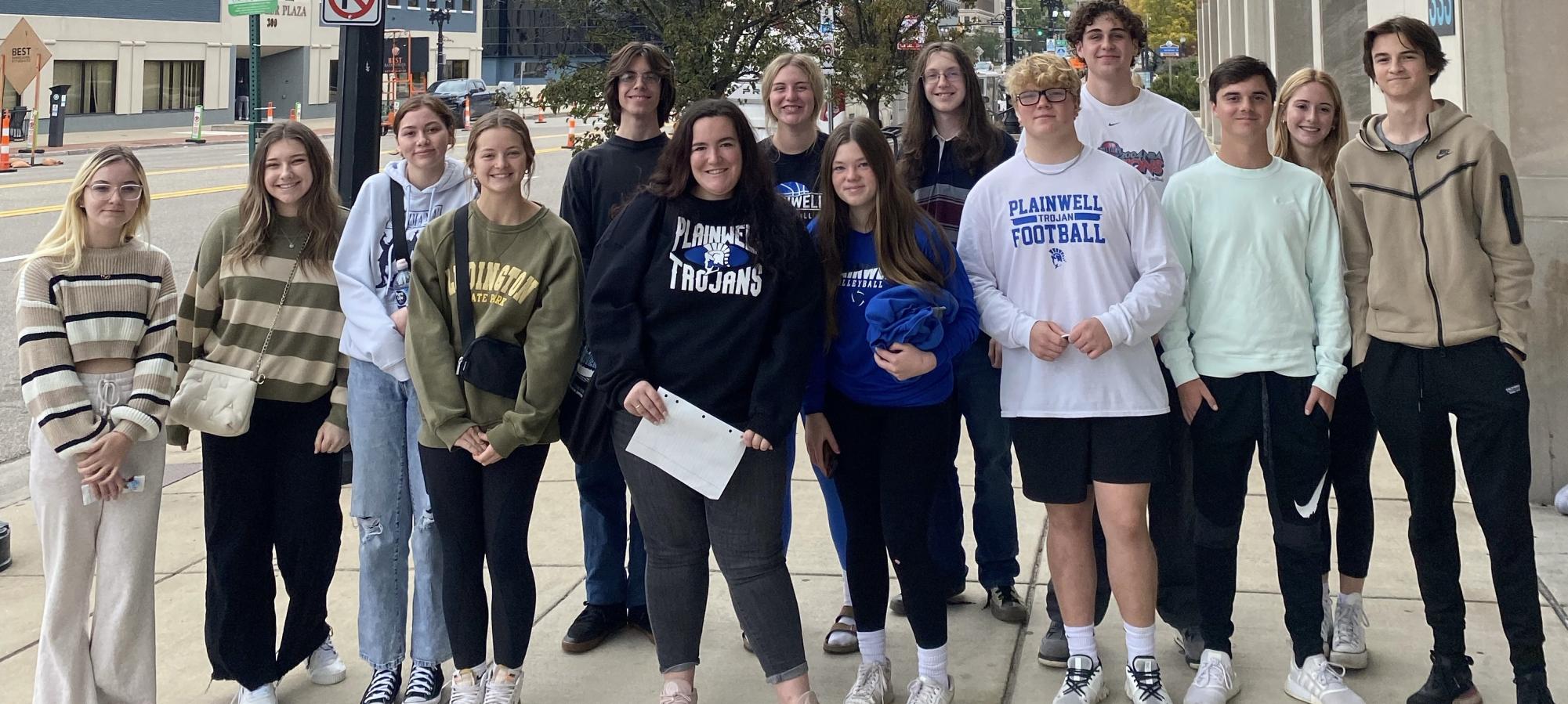My Personal Opinion On Plainwell’s Dress Code
January 29, 2021
I’m going to start off by saying that I don’t flat out hate dress codes. To a certain degree, they are necessary and can be helpful, but I don’t think that they have a positive effect on the learning environment. I understand that there are some restrictions that are admittedly important to have, whether it’s for safety reasons, or to prevent people from wearing inappropriate clothing, whether it’s something that shows too much cleavage or something that says something inappropriate. However, there’s a whole lot about dress codes, especially Plainwell’s, that I and the rest of the student body really could do without.
First, I understand that Plainwell’s dress code could be a lot worse, but it’s still far from perfect. The wording of the PHS dress code immediately stands out to me because it leaves a lot to be misinterpreted. For instance, the wording essentially says that what students wear is determined by what is “deemed inappropriate by an administrator.”(2020-2021 Final Student Handbook, pg 19) This means that the school is leaving it up to individual staff members to uphold the dress code, which I think is a really interesting way to go about it. Leaving the decision up to individual teachers and staff allows for a lot of variation as to what is acceptable and what isn’t. While that at first doesn’t sound so bad, because there are a lot of teachers that are pretty lenient with the dress code, there are also a lot of teachers who aren’t, and a lot of staff who also aren’t. Any set of rules needs consistency, and Plainwell’s dress code doesn’t have it. It’s unfair on the students since the staff is not at fault for the inconsistency, but the students are still negatively affected by it.
Next, Plainwell’s dress code unfairly impacts certain genders of students. The dress code addresses “students (males and females)”(19), which ends up alienating any student who doesn’t fall under either of those genders. After that, the dress code doesn’t say anything specific about either gender, but it does mention cleavage, midriffs, spaghetti straps, racerback tank tops, leggings, short shorts, and skirts. It seems the dress code is only referring to the female body, and the only time it refers to something that you might associate with males is when it mentions open side tank tops, and even then, I’ve seen girls wear those too. As previously stated, I completely understand the logic when it comes to cleavage and midriffs showing, but the whole thing about “tops must cover the top of the shoulder”(19) just doesn’t make sense. There is nothing inappropriate or distracting about seeing someone’s shoulders, and if you ask most students, they’ll tell you that same thing, no matter what gender you ask.
Another thing about the rule of no thin-strapped tank tops and short shorts/skirts: the school is not well temperature controlled. There are classrooms that are kept at freezing temperatures, whether by the teacher or because of their proximity to windows, and there are classrooms that for the same reasons are kept at extremely warm temperatures. There are classrooms by the courtyards that have to be evacuated in the warm months because they get so hot. So, it doesn’t make sense to tell students, especially females, that they can’t wear comfortable clothes, simply because it would be “distracting” to other students? I’d say that it’s more distracting to be sweat-soaked and overheating while you’re trying to work.
Many school dress codes also unfairly impact minority students. They restrict any headwear (items of clothing that cover the head); however, there are a lot of cultures where it is the social norm for women to have their heads, and in some cases, faces covered by headscarves at all times. If a school doesn’t allow this, they’re not allowing freedom to express that student’s culture, and that’s incredibly racially and culturally insensitive.
Next, is the unfair idea that students who violate the dress code are a “distraction” to other students. Maybe that’s the case, but that’s not the fault of the wearer. Students, especially male students, need to learn that if they’re distracted by what another student is wearing (and if it’s clearly not an inappropriate outfit), that they need to take responsibility for their actions and ignore it. If people don’t learn to control themselves when they see something like that now, then they won’t know to control themselves later in life, which can lead to sexual harassment. What dress codes end up teaching students is that it’s the fault of the wearer for distracting other students, which is completely unfair.
The policy for dealing with students who have violated the dress code is that each student “will be asked to change [their] clothing before [they] are allowed to return to class. A second notice will result in a call home and an ISS.”(19) If students are called out of class each time they violated the dress code, that’s going to be distracting for more than just them. People’s eyes are naturally drawn to disturbance, whether it’s movement, sound, or anything similar, so instead of just distracting some students and punishing another, now the whole class has been distracted by the student having to leave and go change. And what happens if the student has nothing else to change into? They go to the office and get to go through the lost and found. So not only do dress codes pick out every girl just trying to dress comfortably in class, and benefit the students who couldn’t keep their eyes off her, but they end up distracting everyone else in the classroom, along with people in other classes as the student walks by to go to their locker.
Plainwell’s dress code is poorly written, highly unfair, and an example of a good idea done badly. There will always be a discourse about the necessity of dress codes, however, the evident gender bias that they unknowingly and knowingly cause is a big issue for many students that need to be dealt with.



